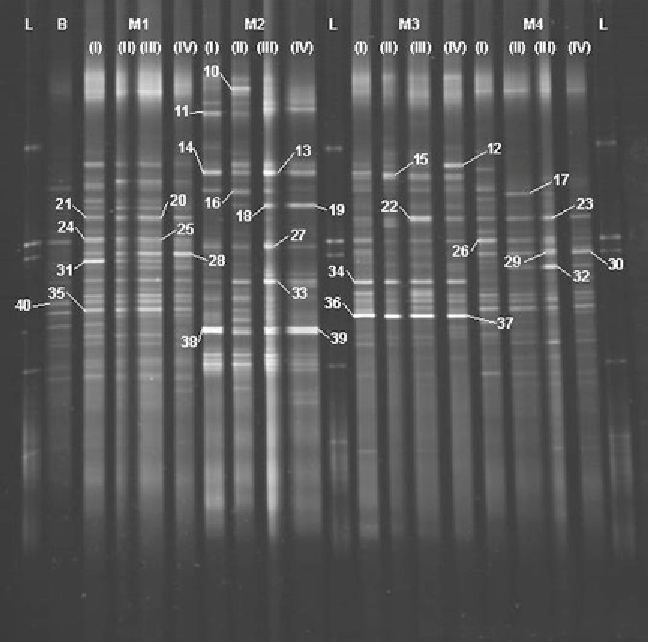Biomedical Engineering Reference
In-Depth Information
Figure 6.8. Community profile analysis of electron donor study using denaturing gel gradient
electrophoresis (DGGE).
and location correspond with shifts in the community structure. Individual bands of interest
may be excised from the gel and sequenced to determine the target gene identity.
6.7.6 Microarrays and High-Throughput Sequencing
Both microarrays and advances in sequencing technology have recently revolutionized
the field of environmental microbiology (Alvarez-Cohen,
2007
). Microarrays, consisting of
thousands of probes on a single chip the size of a microscope slide, permit the rapid and
comprehensive analysis of microbial communities (Figure
6.9
). The probes consist of short
sections of DNA (20-100 nucleotides) representative of a specific gene (either group- or
function-specific), and affixed onto a chip or slide. DNA hybridizes with the target probes,
with signal intensity proportional to the concentration of DNA. Shifts in the overall population
structure thereby result in different intensity patterns. Microarrays typically consist of genes
representative of a single (or several) complete genome for a given organism, group-specific
genes (e.g., 16S rRNA) or functional genes from a broad distribution of organisms. The major
limitation of microarrays is that a predetermined selection of probes is required, and so it is
only possible to detect the genes that the array is designed to target, thereby lending a bias to
the approach.
High-throughput sequencing technologies, such as pyrosequencing, now permit the rapid, high-
quality sequencing of entire environmental populations. This technique therefore creates the most

Search WWH ::

Custom Search